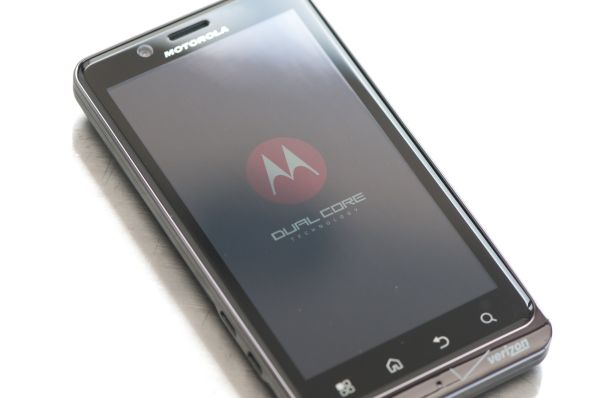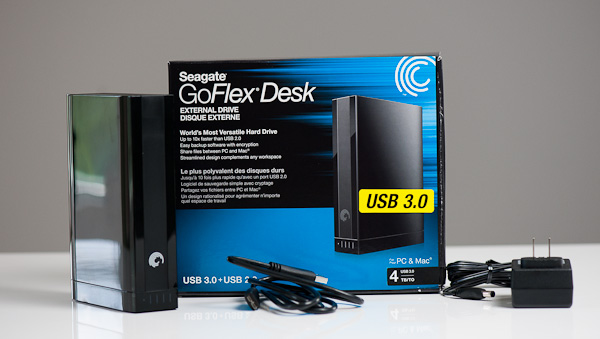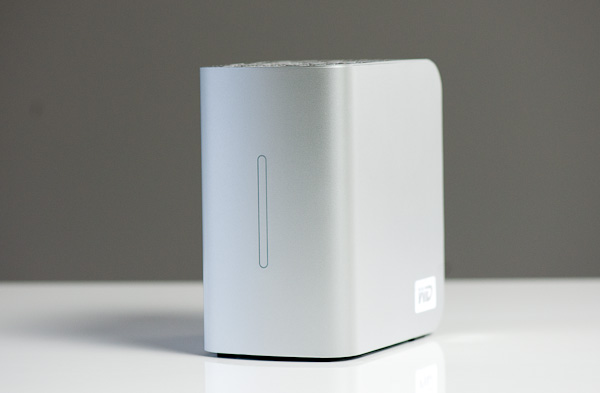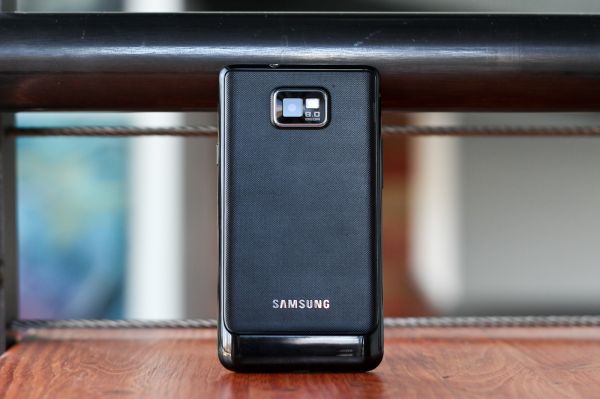Results 851 to 860 of 12094
Thread: Anandtech News
-
09-09-11, 03:40 PM #851
Anandtech: NVIDIA Announces "Grey", First Tegra SoC with Integrated Baseband Due in 2
Four months ago NVIDIA announced the acquisition of Icera, a baseband solution provider. Icera's technology didn't make it into any smartphones but it did have some success in the USB modem market. The obvious impteus for the acquisition was to eventually integrate Icera basebands into NVIDIA Tegra SoCs, providing a "single chip" solution for those customers who want it. Currently Qualcomm is the only major SoC player to offer an application processor with integrated baseband with its Snapdragon SoC.
After the acquisition was announced NVIDIA wouldn't commit to any timeframe for integrating Icera's technology, even going as far as to say that many customers weren't demanding that level of integration at this point. Yesterday NVIDIA's CEO, Jen-Hsun Huang confirmed that we'd see a mainstream Tegra offering with an integrated "3G/4G" baseband from Icera in 2012 alongside its Wayne SoC. This integrated SoC is codenamed Grey. Xbit Labs was the first to report on the story and we just confirmed it with NVIDIA.
Grey will coexist with Wayne. Jen-Hsun referred to Grey as being able to address the "majority of the smartphone market" indicating that it may be a smaller design than Wayne. NVIDIA has yet to confirm the architecture behind Wayne (or Grey) at this point, but we can only assume that by 2012 it'll be time for NVIDIA to shift to Cortex A15 at 28nm.
More...
-
09-10-11, 04:20 AM #852
Anandtech: Intel Leaks i7-2700K
Intel's Sandy Bridge CPUs were launched in January and so far, the desktop i7 lineup has consisted of three SKUs: i7-2600, i7-2600K and i7-2600S. Earlier this week, Intel released 16 new Sandy Bridge CPUs, but the desktop i7 series remained unchanged. Yesterday, Intel updated their Material Declaration Data Sheets (MDDS) with product code for i7-2700K. The exact product code is:
BX80623I72700K SR0DGFor comparison, the product code for i5-2500 is:
BX80623I52500 SR00TLets break down the product codes. The first two letters, "BX", stand for boxed unit. These letters would be different if the unit wasn't a boxed unit, for example "FF" is for non-boxed PGA988 units. There could be a third letter "C" which means it's a boxed unit for China market (hence there are two product codes for i7-2700K). After that, there is a five number code "80623". This is a specific code for all boxed desktop Sandy Bridge CPUs. Finally we get to the processor number which is the most interesting part and in this case, revealed the i7-2700K. There is still a separate spec code after the processor number and it's processor specific as well.
The specs of i7-2700K are unknown though. It's also a question whether there will be i7-2700 and i7-2700S or not. However, we would expect i7-2700K to carry similar specs as i7-2600K (four cores, Hyper-Threading, unlocked multiplier, 8MB L3...), but a slightly higher default frequency. Given Intel's history, 100MHz (one multiplier) increase sounds likely, making i7-2700K's stock frequency 3.5GHz with up to 3.9GHz Turbo. Price wise i7-2700K should also replace i7-2600K, making its price ~$317.
There is no word on the availability of i7-2700K. Leaked roadmaps suggest something equal or better than i7-2600K between Q3'11 and Q1'12. Considering that Intel just released new CPUs a few days ago, it seems unlikely that the release is imminent. On the other hand, it makes no sense to release i7-2700K just before Ivy Bridge, thus our guess would be Q4'11, around the same time as AMD's Bulldozer hits the shelves.
Source: Intel via CPU-World
More...
-
09-10-11, 08:40 PM #853
Anandtech: Seagate's GoFlex Desk 4TB External HDD Review
I'm off to IDF this week while Ryan and Brian cover Microsoft's BUILD conference, so expect lots of CPU and Windows 8 news in the coming days. Just before I left however Seagate sent me a review sample of its recently announced GoFlex Desk 4TB drive. Eager to find out if anything had changed since I reviewed last year's 3TB model I dove right into testing.
Read on for our quick review of Seagate's first 4TB HDD.
More...
-
09-10-11, 10:40 PM #854
Anandtech: Western Digital My Book Studio Edition II 6TB Review
While we await more Thunderbolt storage devices, Western Digital grabbed headlines not too long ago for the announcement of its 6TB My Book Studio Edition II Mac-ready external drive. The two-bay external enclosure features two 3.5" Western Digital Caviar Green drives and is available in 2TB, 4TB and 6TB configurations. The drives are priced at $249, $399 and $499 respectively although street pricing is significantly lower. I saw the drives going for $179 for 2TB, $303 for the 4TB configuration and $379 for the 6TB model at Amazon.
By default My Book Studio Edition II implements a RAID-0 across its two internal drives, although Western Digital's software lets you convert that to a RAID-1 (at half the capacity) if you'd like.
Read on for our review.
More...
-
09-11-11, 10:10 AM #855
Anandtech: Samsung Galaxy S 2 (International) Review - The Best, Redefined
The road to our Galaxy S2 review has been a long one. The first time we saw the device was at Mobile World Congress, where it was initially announced. There, Anand and myself played with and hurriedly benchmarked one and came away more than a bit disappointed with performance. I set my expectations based on our initial experience and came away from the conference prepared to be underwhelmed when the device launched internationally and stateside. There was never any doubt in my mind that the device would be a runaway success just like the first one, but I still came away disappointed.
Boy was I wrong. The device that launched internationally is completely different, in the positive sense.
It took a long time for us to get an international Galaxy S 2 in our hands, but we finally got one, and for the past few weeks I’ve been using it as my primary device here in the US on AT&T. It’s not an exaggeration at all to say that we’ve received more requests for a Samsung Galaxy S 2 (henceforth SGS2) review than any other smartphone, by at least an order of magnitude. The tomes of information already writ about this phone has made it all the more daunting to dive head-first into a comprehensive exploration of the phone, and we’ve tried to do our best. Read on for our full review.
More...
-
09-11-11, 12:30 PM #856
Anandtech: ARM's Mali-400 MP4 is the Fastest Smartphone GPU...for Now
Earlier this morning we published our long awaited review of the Samsung Galaxy S 2. In it we dedicated a few pages to investigating Samsung's own Exynos 4210 SoC. The chip a full featured dual-core Cortex A9 design, comparable to TI's OMAP 4. The big news however is the Exynos 4210 is the first SoC in a smartphone to use ARM's Mali-400 GPU.
Samsung implemented a 4-core version of the Mali-400 in the 4210 and its resulting performance is staggering as you can see above. Although it's still not as fast as the PowerVR SGX 543MP2 found in the iPad 2, it's anywhere from 1.7 - 4x faster than anything that's shipping in a smartphone today.
The Mali-400 MP4 is put to good use in the Galaxy S 2 as our own Brian Klug found it to be the smoothest experience by an order of magnitude compared to any currently available Android phone.
The downsides to the Mali-400 MP4? It doesn't have the best triangle throughput, which could be an issue in future games that may scale along that vector rather than simply increasing pixel shader complexity.
More...
-
09-12-11, 01:00 AM #857
Anandtech: Samsung's Galaxy S 2: The Smoothest Scrolling Android Device Around
One aspect of differentiation between Android smartphones has always been how smoothly they scroll both in the OS and in the browser. Later versions of Android have addressed the issue by adding varying degrees of GPU acceleration to the OS, but there's still the need of raw memory bandwidth and the GPU horsepower to back it up. It turns out that Samsung's Galaxy S 2 delivers both.
The Vellamo data above measures scrolling performance, higher numbers being better of course. Compared to all high end GPUs available in Android smartphones today, the Galaxy S 2 is significantly faster. The Exynos 4210 features a dual-channel LPDDR2 memory interface along with a very powerful Mali-400 MP4 GPU. Combined with Samsung's GPU accelerated browser the SGS2 is able to deliver a huge leap in scrolling performance.
More...
-
09-12-11, 01:10 AM #858
Anandtech: Ivy Bridge GPU Performance: Up to 60% Faster than SNB & Better QuickSync
This week Intel will begin sharing some of the first details of its Ivy Bridge processor (2012 Core i-series CPU) at the annual Intel Developer Forum in San Francisco. While the show officially starts on Tuesday, we have some early details about the chip.
Sandy Bridge was Intel's first high-end architecture to integrate a GPU on-die. The SNB GPU is available in two configurations: GT1 with 6 EUs (processors/execution units/cores) and GT2 with 12 EUs. All mobile versions ship with GT2 while most desktop parts ship with GT1. Intel calls GT2 its HD Graphics 3000 while GT1 chips come with HD Graphics 2000. There's a less featured version of GT1 that's simply called Intel HD Graphics as well and it's found in Sandy Bridge Pentium & Celeron CPUs.
Ivy Bridge's GT2 configuration has 16 EUs, no word on how many the GT1 configuration will have. As a result Intel is expecting a 60% increase in 3DMark Vantage scores (Performance Preset) and a 30% increase in 3DMark '06 scores. IVB GT1 on the other hand will only see performance increase by 10 - 20%. If we look at the 3DMark Vantage data from our Llano notebook review, a 60% increase in performance over SNB would put Ivy Bridge's GPU performance around that of AMD's A8. It remains to be seen how well this translates into actual gaming performance though.
The other information about Ivy Bridge's GPU has been known for a while: DX11, OpenCL 1.1 and OpenGL 3.1 will all be supported. The last tidbit we have is that Quick Sync performance is apparently much improved. Intel is privately claiming up to 2x better performance than Sandy Bridge in accelerated video transcoding or lesser gains but improved image quality. The performance improvements only apply to GT2 IVB configurations.
More...
-
09-12-11, 01:30 AM #859
Anandtech: Ivy Bridge Configurable TDP Detailed
At Computex Intel announced that Ivy Bridge would be its first processor to support a configurable TDP. Today all CPUs are rated at a single maximum TDP. Mainstream notebook processors fall in the 35 - 45W range, while mainstream desktops are around 65W. As the world embraces mobility and interfaces like Thunderbolt enable new usage models for notebook users (e.g. docking station with a beefy external GPU), Intel had to rethink its power strategy.
Today with a 35W CPU, Intel guarantees the OEM that if it implements a chassis and cooling system capable of dissipating that much heat the chip will operate as intended. If the OEM offers an optional dock or high-performance cooling mode that could cool a higher wattage chip, the CPU can't take advantage of it. Ivy Bridge changes this.
Ultra low volt (ULV) and extreme edition IVB parts will carry three TDP ratings: nominal, a lower configurable TDP (cTDP down) and an upper configurable TDP (cTDP up). Let's talk about cTDP up first.
ULV Ivy Bridge parts will be rated at 17W, similar to the ULV SNB CPUs that are used in Ultrabooks and the new MacBook Air. Intel will also guarantee these chips at a higher frequency with a TDP of 33W. If the Ivy Bridge MacBook Air could dissipate 17W of heat normally but when placed on a docking station with additional cooling capabilities could remove 33W of heat, the CPU would simply run at a much higher frequency when docked. This goes beyond simple turbo as it exceeds the CPU's nominal TDP, whereas turbo mode is mostly bound by TDP.
The same applies in reverse. If you want the chip to behave as if it were a 13W part instead of a 17W part, that will be possible as well. It's configurable performance based on the current conditions. If you have tons of cooling ability, you get more performance. If you need battery life, you get a chip that makes your system behave like an ultraportable.
The extreme edition IVB parts will also support configurable TDP. 55W parts will be able to go up to 65W or go down to 45W.
You can expect that Intel will use configurable TDP as a reason for customers to buy the more expensive versions of Ivy Bridge. Ivy Bridge is expected to arrive on notebooks and desktops in April - May 2012.
More...
-
09-12-11, 03:40 AM #860
Anandtech: Motorola Droid Bionic - A Quick Preview
Hot off the heels of finishing our Samsung Galaxy S 2 review, I'm off to Microsoft's BUILD conference with Ryan while Anand covers IDF. Before we get knee deep in all of that conference excitement however, I wanted to give a quick preview of the Motorola Droid Bionic which I've had for close to a week now.

For Verizon subscribers, the Bionic has easily been the most anticipated device of the summer, as it's the first 4G LTE enabled smartphone with a dual core SoC. Read on for some quick thoughts on the device, and stay tuned for the full review.
More...
Thread Information
Users Browsing this Thread
There are currently 18 users browsing this thread. (0 members and 18 guests)





 Quote
Quote


















Bookmarks